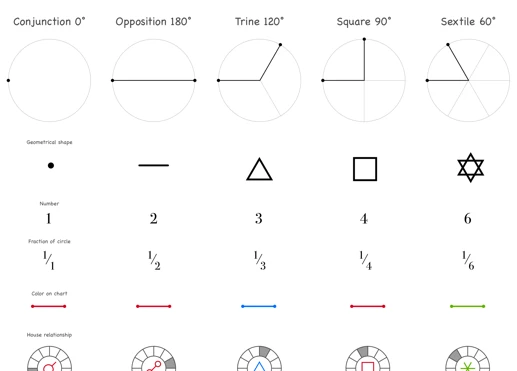Astrology has always been a subject that captivates and intrigues people, offering insights into our personalities, relationships, and life events. One crucial aspect of astrology is interpreting birth charts, which is accomplished by analyzing the astrological aspects present in a chart. Astrological aspects are the angles formed between planets and points in a birth chart, and they play a significant role in understanding the intricacies of an individual’s life. These aspects offer valuable information about personality traits, strengths, weaknesses, and potential challenges. In this article, we will delve deep into the importance of astrological aspects in interpreting birth charts, exploring the different types of aspects, major and minor aspects, and the power of aspect patterns. So, let us embark on this enlightening journey of unraveling the mysteries of astrology and understanding the complex web of aspects in birth charts.
Contents
- What are Astrological Aspects?
- Interpreting Birth Charts
- Understanding Major Aspects
- Role of Minor Aspects
- The Power of Aspect Patterns
- Conclusion
-
Frequently Asked Questions
- What is the significance of astrological aspects in birth chart interpretation?
- How many types of astrological aspects are there?
- What is the difference between major and minor astrological aspects?
- How do astrological aspects affect personality traits?
- Can astrological aspects predict life events?
- What is a grand trine and how does it impact a birth chart?
- What is a T-Square aspect pattern?
- How do aspect patterns influence a birth chart?
- Can astrological aspects change over time?
- Do astrological aspects determine one’s fate?
- References
-
Frequently Asked Questions
- What is the significance of astrological aspects in interpreting birth charts?
- How do astrological aspects impact birth chart interpretation?
- What are the major aspects in astrology?
- Can you explain the conjunction aspect?
- What does the opposition aspect signify?
- How does the square aspect influence birth chart interpretation?
- Can you explain the trine aspect?
- What does the sextile aspect signify?
- Are minor aspects significant in birth chart interpretation?
- What is the significance of aspect patterns in birth charts?
- References
- Read More
What are Astrological Aspects?
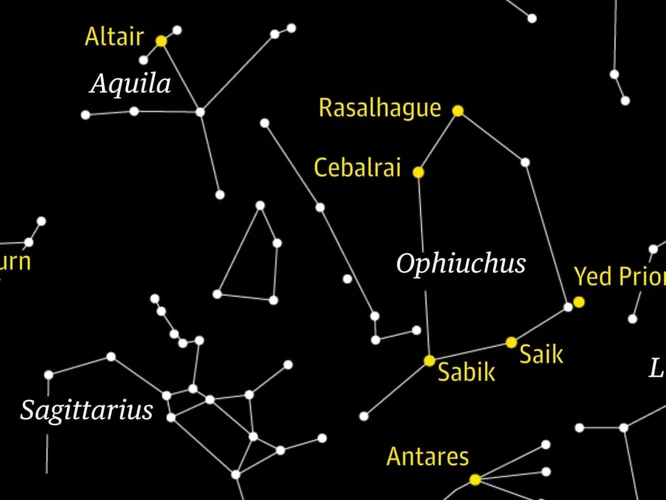
Astrological aspects are the angles formed between planets and other significant points in a birth chart. They represent the dynamic relationships and interactions between celestial bodies, providing crucial information about an individual’s personality, life events, and potential experiences. These aspects reflect the energetic exchanges between planets, shedding light on the different influences and powers at play in a person’s life. Understanding astrological aspects is vital in interpreting birth charts because they paint a detailed picture of the various strengths, challenges, and potentials within a person’s life journey. These aspects can create a harmonious flow of energy or present challenges that require growth and adaptation. By studying the aspects in a birth chart, astrologers can gain profound insights into a person’s character, relationships, career path, and overall life trajectory. Astrological aspects are diverse, ranging from conjunctions (when planets are close together in the same sign) to oppositions (when planets are across from each other) and squares, trines, sextiles, and more. Each aspect carries its unique energy and meaning, contributing to the complex tapestry of an individual’s birth chart. Understanding the different types of astrological aspects is paramount in uncovering the rich layers of meaning within a birth chart-because every angle matters, and every aspect adds depth to the astrological analysis.
Definition of Astrological Aspects
Astrological aspects can be defined as the geometric angles formed between celestial bodies, such as planets, in a birth chart. These aspects represent the relationships and connections between these celestial bodies, bringing forth specific energies and influences that shape an individual’s life. They provide insight into the dynamic interplay between various astrological factors and how they impact different areas of a person’s personality and experiences. Astrological aspects are fundamental in understanding the complexity of a birth chart and uncovering its deeper meanings. They highlight the way planets interact with each other, indicating whether they work together harmoniously or create tension and challenges. Each aspect has its distinct characteristics and qualities that contribute to the overall astrological analysis. For example, a conjunction occurs when two planets are in close proximity to each other, amplifying their combined energies. On the other hand, an opposition happens when planets are positioned across from each other, creating a tension of contrasting forces that need to be balanced. The various aspects, including squares, trines, sextiles, and more, all play a significant role in shaping an individual’s strengths, challenges, and areas of potential growth. By carefully examining these aspects, astrologers can gain a deeper understanding of the intricate dynamics within a birth chart and provide valuable insights into a person’s life journey. Understanding the definition of astrological aspects is essential for interpreting birth charts and uncovering the hidden layers of an individual’s astrological makeup.
Types of Astrological Aspects
There are several types of astrological aspects that play a significant role in interpreting birth charts. Here, we will explore some of the most common and influential aspects:
1. Conjunction: A conjunction occurs when two planets are in close proximity to one another, typically within 10 degrees of each other. This aspect emphasizes a blending and merging of energies, amplifying their combined influence. It signifies a strong connection or alignment between the planets involved, highlighting shared traits and characteristics.
2. Opposition: An opposition is formed when two planets are directly across from each other in the birth chart, approximately 180 degrees apart. This aspect represents a dynamic tension between the planets, symbolizing a need to find balance and integration between opposing energies. It often brings conflicts and challenges, but also the potential for growth and self-awareness.
3. Square: A square aspect occurs when two planets are approximately 90 degrees apart. This aspect creates a sense of tension, friction, and internal conflict. It signifies a need for action, resolution, and growth, as it pushes individuals to confront and overcome obstacles in their lives. Squares can be seen as turning points and catalysts for change.
4. Trine: A trine occurs when two planets are approximately 120 degrees apart. This aspect represents a harmonious flow of energy and affinity between the planets involved. It signifies ease, opportunities, and natural talents. Trines often bring about positive outcomes and indicate areas of strength and favorable circumstances.
5. Sextile: A sextile is formed when two planets are approximately 60 degrees apart. This aspect signifies opportunities, creativity, and supportive energies. It represents a harmonious connection that allows for the blending of different energies, often leading to positive outcomes and personal growth.
Understanding and interpreting these various astrological aspects is crucial in gaining deeper insights into a person’s birth chart. By examining the specific angles and relationships between planets, astrologers can unravel the complex layers of personality traits, life events, and potential challenges and opportunities that shape an individual’s life. Each aspect adds a unique flavor and dimension to the overall astrological analysis, providing a comprehensive understanding of the individual’s cosmic makeup. Truly, the types of astrological aspects are like the colors on a painter’s palette, allowing astrologers to paint a vivid and nuanced picture of a person’s life journey. [Internal link: If you want to learn more about the role of comets, asteroids, and meteor showers in astrology, click here.](/role-comets-asteroids-meteor-showers/)
Interpreting Birth Charts
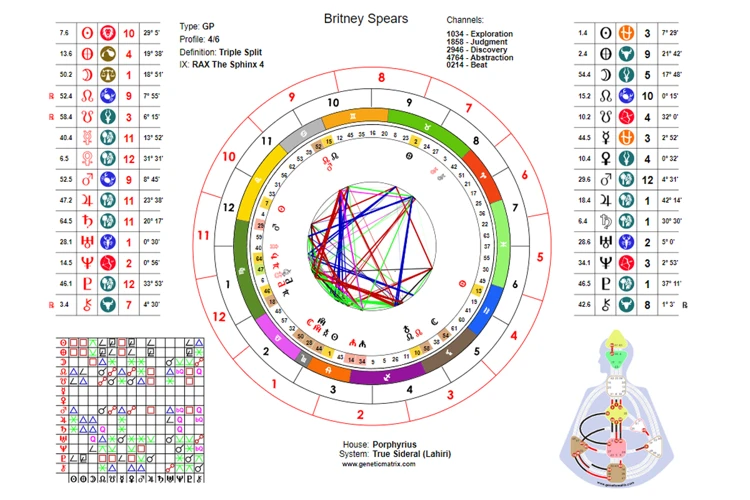
Interpreting birth charts is a fundamental aspect of astrology that allows astrologers to unlock the secrets encoded in a person’s unique celestial map. A birth chart, also known as a natal chart, is a snapshot of the planets’ positions at the specific time and location of an individual’s birth. It serves as a cosmic blueprint, revealing the potentialities, strengths, and challenges that shape a person’s life. To interpret a birth chart accurately, astrologers consider various factors, including the placement of planets in different signs and houses, as well as the aspects formed between them. The birth chart provides insights into an individual’s personality traits, talents, and inclinations, helping us understand their motivations and life path. By analyzing the different elements in a birth chart, astrologers can offer guidance on relationships, career choices, and personal growth. Every placement and aspect in a birth chart comes together to create a unique narrative, highlighting the different facets of an individual’s life. It is through the interpretation of birth charts that we gain a deeper understanding of ourselves and our place in the cosmos. So, whether you are exploring the unique characteristics of an Ophiuchus individual or unraveling the deep passions within, understanding and interpreting birth charts is an intricate and enlightening process.
Overview of Birth Charts
An overview of birth charts provides a foundational understanding of how astrologers interpret the unique blueprint of an individual’s life. A birth chart, also known as a natal chart, is a snapshot of the sky at the moment of a person’s birth. It acts as a cosmic map, representing the positions of the planets, as well as other celestial points, such as the Sun, Moon, and rising sign, at that specific time and location. The birth chart serves as a foundation for astrologers to analyze and interpret the individual’s personality traits, strengths, weaknesses, and potential life events. It offers insights into various astrological houses, which symbolize different areas of life, such as relationships, career, health, and spirituality. The birth chart shows the positions of the planets in different zodiac signs, indicating the energies and archetypal influences at play. Additionally, astrologers consider the aspects formed between planets to understand the dynamic interplay of these cosmic forces. Each birth chart is unique, reflecting the specific planetary alignments and configurations at the moment of birth. By studying the birth chart, astrologers can unravel the intricate tapestry of an individual’s life, providing guidance and insights into their unique journey. Whether exploring the influence of the famous zodiac signs or the lesser-known Ophiuchus, the birth chart acts as a powerful tool to decode the complexities of human existence.
Role of Astrological Aspects in Birth Chart Interpretation
The role of astrological aspects in birth chart interpretation is invaluable. These aspects provide astrologers with a deeper understanding of the complexities and intricacies within a person’s life journey. By analyzing the angles formed between planets and significant points, astrologers can decipher the energies at play, uncover patterns, and gain insights into an individual’s personality traits, strengths, challenges, and potential life events.
Astrological aspects act as a dynamic framework within which the planets interact, influencing the expression of their energies and shaping the overall narrative of a birth chart. The aspects can create a harmonious flow of energy or bring forth challenges that require growth and transformation. For example, a conjunction between Venus and Mars indicates a merging of love and passion, amplifying the influence of both planets in the chart. On the other hand, an opposition between Saturn and Uranus may create tension between the need for structure and the desire for freedom and change.
Each aspect carries its unique energy and symbolism, highlighting different facets of an individual’s life. They can shed light on areas such as relationships, career, personal growth, and spirituality. For example, a trine between the Sun and Jupiter may indicate fortunate opportunities and an expansive outlook on life, while a square between Venus and Saturn could bring challenges and lessons in matters of love and self-worth.
Astrological aspects also provide context and nuance to other astrological factors in a birth chart. They can modify the influence of planetary placements, adding depth and complexity to the interpretation. For instance, a challenging square aspect between the Moon and Pluto might intensify the emotional landscape of an individual’s life, while a supportive trine aspect between Mercury and Uranus can enhance intellectual capabilities and the ability to think outside the box.
Astrological aspects play a vital role in birth chart interpretation by giving astrologers a framework to understand the interplay of energies within a person’s life. They offer valuable insights into personality traits, life events, and potential challenges. Understanding these aspects allows for a more profound and comprehensive analysis of a birth chart, enabling individuals to gain a deeper understanding of themselves and navigate their life paths with greater clarity and self-awareness.
Understanding Major Aspects
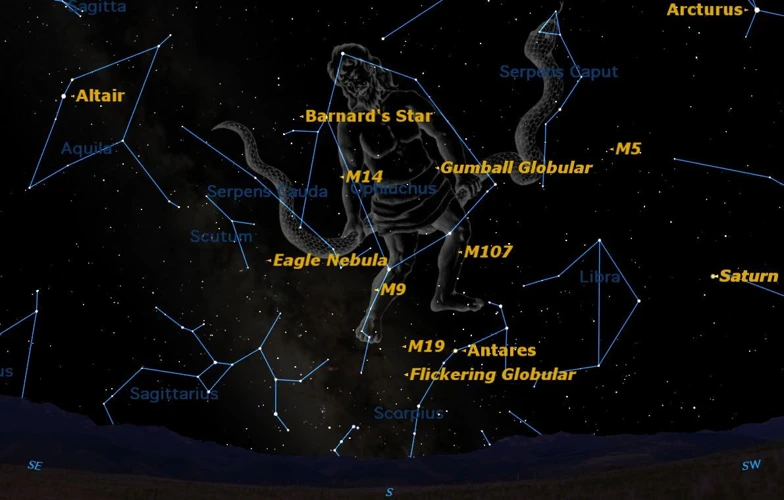
Understanding major aspects is vital in interpreting birth charts as they play a significant role in shaping an individual’s astrological profile. Major aspects are characterized by specific angles between planets and other significant points. Let’s explore some of these major aspects:
1. Conjunction: A conjunction occurs when two or more planets are in close proximity to each other, amplifying their combined energy. This aspect signifies a merging of energies, often resulting in a strong influence on the individual’s personality traits and behavioral patterns.
2. Opposition: An opposition happens when two planets are directly opposite each other in the birth chart. This aspect represents a dynamic tension between the energies of these planets. It often manifests in individuals as a struggle to find balance and integration between these opposing forces.
3. Square: A square occurs when two planets are approximately 90 degrees apart, creating a challenging and dynamic aspect. This aspect often brings forth friction and conflict, pushing individuals to confront obstacles and make necessary changes in their lives.
4. Trine: A trine is formed when two planets are approximately 120 degrees apart, creating a harmonious and supportive aspect. This aspect signifies ease and flowing energy, offering opportunities for manifesting talents, creativity, and personal growth.
5. Sextile: A sextile occurs when two planets are approximately 60 degrees apart, promoting opportunities and positive exchanges between their energies. This aspect often brings about favorable circumstances and facilitates cooperative efforts and intellectual growth.
Understanding the dynamics and influences of these major aspects is crucial in birth chart interpretation, as each aspect contributes to the overall astrological makeup of an individual. By examining the specific angles and interactions of these major aspects, astrologers can gain deeper insights into the individual’s strengths, challenges, and potentials. It is important to note that while major aspects hold significant weight in interpreting birth charts, they are just one piece of the intricate astrological puzzle. Each birth chart is unique, and the interplay of major aspects with minor aspects and aspect patterns adds layers of complexity to the overall analysis. Delving into the world of major aspects opens up a realm of understanding and unraveling the intricate connections between the planets, providing valuable insights into the nuances of an individual’s astrological profile.
Conjunction
The conjunction is a powerful astrological aspect that occurs when two planets are in close proximity to each other in the same sign. It represents a merging of energies, where the combined influence of the two planets intensifies and amplifies their impact on the individual’s life. A conjunction can create a strong focus and concentration of energy in specific areas of life. It signifies a union of the two planetary energies, working together in harmony or occasionally creating tension and conflicting interests. This aspect can manifest in various ways depending on the planets involved. For example, a conjunction between Venus and Mars can indicate passionate and intense relationships, while a conjunction between the Sun and Moon can symbolize a person with a strong sense of self and emotional intelligence. The specific zodiac sign and house placement of the conjunction further refine its meaning in an individual’s birth chart. It is important to note that while conjunctions often have powerful effects, their influence can vary depending on the planets involved and the overall context of the birth chart. Whether it brings blessings or challenges, the conjunction aspect is a significant piece of the astrological puzzle, providing valuable insights into an individual’s personality traits, talents, and life experiences. To further explore the unique characteristics of individuals born under specific conjunctions, you can refer to our article on ‘unraveling deep passions in Ophiuchus individuals‘.
Opposition
An opposition is an astrological aspect that occurs when two planets are approximately 180 degrees apart in the birth chart. This aspect represents a tension or polarity between the energies of the involved planets. When planets are in opposition, they are in opposing signs, creating a dynamic tug of war within the individual’s psyche. It highlights a dichotomy between different aspects of the personality, often leading to a sense of internal conflict or external challenges. The opposition aspect brings awareness to the need for balance and integration between these opposing energies.
In an opposition, the two planets involved often have contrasting qualities or themes. For example, the opposition between the Sun and the Moon can create a struggle between one’s ego and emotions, resulting in a constant push-pull between personal expression and emotional needs. Similarly, an opposition between Mars and Venus can bring tension between assertiveness and harmony, potentially leading to relationship dynamics where passion and love require careful balance.
It’s important to understand that oppositions are not inherently negative or problematic. Instead, they provide opportunities for growth, self-awareness, and finding a middle ground. The key lies in integrating the opposing energies and finding a harmonious way to express both sides. Individuals with strong opposition aspects in their birth charts may experience internal conflicts that ultimately drive them to seek resolutions, personal growth, and a deeper understanding of themselves and others.
The opposition aspect in astrology illuminates the complex interplay between opposing energies within an individual’s birth chart. Understanding and navigating these oppositions can lead to personal growth, balance, and the harmonious integration of seemingly contradictory qualities. To learn more about the impacts of astrological aspects, including oppositions, you can explore the fascinating realm of Ophiuchus’s individuals and how they unravel deep passions in their lives.
Square
A square is a type of astrological aspect that occurs when two planets are approximately 90 degrees apart in the birth chart. This angle creates a tension and challenge between the energies of the planets involved. The square aspect represents internal conflicts, obstacles, and struggles that individuals may face throughout their lives. Planets in square aspect often signify areas of life where there is a need for growth, development, and transformation. The square aspect acts as a catalyst for change and personal evolution. It pushes individuals out of their comfort zones and urges them to confront their limitations and work towards resolutions. While squares can be challenging, they also hold great potential for growth and transformation. They highlight areas of life where individuals may experience frustration, but they also provide opportunities for personal development and breakthroughs. By acknowledging and working with the energy of square aspects, individuals can harness their inner strength and determination to overcome obstacles and achieve success. It is essential to remember that squares are not inherently negative but rather serve as catalysts for personal growth and transformation. So, rather than fearing the square aspect in a birth chart, it is important to embrace it as a powerful force that can lead to self-discovery and evolution.
Trine
A trine is an astrological aspect that occurs when two planets are approximately 120 degrees apart. It is considered one of the most harmonious aspects in astrology, as it signifies a flow of positive energy and ease between the planets involved. The trine represents a natural affinity and compatibility between the planetary energies, allowing them to work together in harmony. Individuals with trines in their birth charts often possess innate talents, gifts, and abilities that come to them effortlessly. This aspect signifies opportunities, blessings, and areas of life where things tend to go smoothly. It encourages creativity, inspiration, and a sense of ease in expressing oneself. The trine fosters a sense of balance and cooperation, promoting positive relationships, personal growth, and a favorable outlook. It is important to note that while trines can bring many advantages, there is also a risk of becoming complacent or taking the easy way out. It is crucial for individuals with trines in their charts to actively channel the positive energy and not become overly reliant on it. By consciously utilizing the gifts and opportunities presented by trines, individuals can maximize their potential and lead fulfilling lives.
Sextile
A sextile is an astrological aspect that occurs when two planets are approximately 60 degrees apart. It is considered a harmonious aspect, bringing together complementary energies and facilitating easy communication and cooperation between the planets involved. The sextile represents opportunities, talents, and potential growth in a person’s life. When two planets form a sextile, they work together synergistically, enhancing each other’s qualities and amplifying their positive effects. This aspect encourages creativity, adaptability, and the ability to seize opportunities. It signifies a favorable flow of energy and suggests that the areas of life ruled by the planets involved will harmoniously support each other. For example, if there is a sextile between Venus and Mars in a birth chart, it suggests that love and relationships (Venus) will be aligned with passion, energy, and drive (Mars), creating a harmonious and fulfilling romantic life. The sextile aspect encourages individuals to embrace the opportunities that come their way and make the most of them, utilizing their natural talents and abilities to manifest positive outcomes. While the power of the sextile may not be as strong or as transformative as some other aspects, it still plays a significant role in shaping a person’s life experiences and can be a valuable asset in achieving personal and professional success.
Role of Minor Aspects
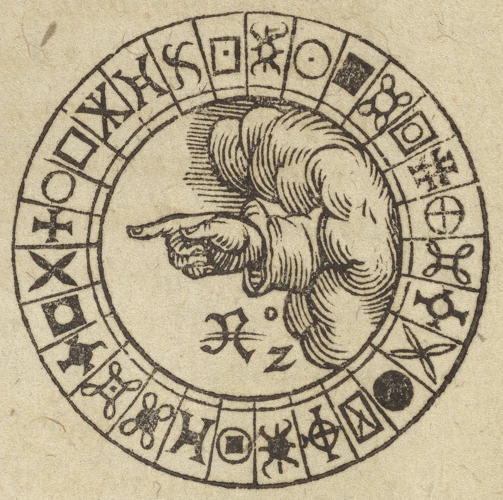
Minor aspects in astrology may not carry the same weight as major aspects, but they still play a significant role in interpreting birth charts. Although minor aspects are not as well-known or widely discussed as their major counterparts, they provide additional nuances and insights into an individual’s astrological makeup. One of the minor aspects is the quincunx, also known as the inconjunct aspect. This aspect occurs when two planets are roughly 150 degrees apart, creating a sense of tension and unease. The quincunx highlights areas of life where adjustments and adaptations are necessary, often indicating a sense of discomfort or imbalance. Another minor aspect is the semi-sextile, formed when two planets are 30 degrees apart. This aspect suggests a subtle and harmonious connection, showcasing opportunities for growth and integration between two planetary energies. The semi-square is yet another minor aspect, occurring when two planets are 45 degrees apart. It represents a subtle and often challenging link between two planetary energies, highlighting areas of frustration and internal conflict. While minor aspects may not have the same intensity as major aspects, they contribute to a more comprehensive understanding of an individual’s birth chart. Incorporating minor aspects into astrological interpretations provides a more nuanced and detailed analysis, uncovering hidden layers and bringing clarity to the complexities of one’s astrological makeup. So, even though they may be “minor,” these aspects should not be disregarded or overlooked when interpreting birth charts. They shed light on subtle dynamics and add depth to the astrological portrait of an individual.
Quincunx
A quincunx aspect, also known as an inconjunct, occurs when two planets are approximately 150 degrees apart. It represents a connection between two signs that have contrasting energies and do not naturally blend together. The quincunx is considered a minor aspect, but it holds significant insights into the challenges and adjustments required in a person’s life. It creates a sense of tension and unease as the energies of the planets involved find it difficult to cooperate harmoniously. This aspect often symbolizes the need for adaptation, flexibility, and compromise in order to find balance. A quincunx can indicate areas of life where we struggle to find integration and harmony, and where adjustments are necessary for growth and development. This aspect pushes us to address the seemingly unrelated areas of our life and make necessary changes to find a sense of equilibrium. It requires us to constantly evaluate and reevaluate our choices to align with our true desires and values. While it may present challenges, a quincunx aspect also offers opportunities for growth, personal development, and cultivating new perspectives. It forces us to think outside the box and find creative solutions to ease the tension between the two conflicting energies. Understanding the quincunx aspect in a birth chart provides valuable insights into areas of life where adapting and making adjustments are necessary for personal growth and fulfillment. So, embrace the challenges that the quincunx brings and unravel the hidden potentials for growth and transformation within your birth chart. For more information on uncovering deep passions and unique characteristics, particularly for Ophiuchus individuals, you can explore this article.
Semi-Sextile
A semi-sextile is a minor astrological aspect that occurs when two planets are approximately 30 degrees apart. It is considered a harmonious aspect, but its influence is not as strong or significant as major aspects like conjunctions or trines. The semi-sextile represents a subtle and supportive connection between planets, offering opportunities for growth and cooperation. When two planets form a semi-sextile, they share a gentle understanding and can work together to achieve their respective goals. This aspect encourages cooperation, compromise, and the integration of different energies. It can bring harmony and balance to the areas of life represented by the planets involved. However, the influence of a semi-sextile may not be as noticeable or powerful as other major aspects. It acts as a subtle undertone, quietly influencing our experiences and interactions. In terms of interpretation, a semi-sextile suggests that there is a need for subtle adjustments and integration between the energies represented by the planets involved. It encourages us to find common ground and foster cooperation in areas where these planets have an impact on our lives. While the influence of a semi-sextile may not be as pronounced as other aspects, it still contributes to the overall dynamics of a birth chart and can provide valuable insights into our relationships, personal development, and life experiences.
Semi-Square
A semi-square is an astrological aspect that occurs when two planets are approximately 45 degrees apart. This aspect combines the energies of the two planets involved, creating a dynamic and somewhat challenging influence. The semi-square is considered a minor aspect, but it can still have a significant impact on a person’s birth chart interpretation.
When two planets form a semi-square, they generate tension and frustration. This aspect represents a point of friction and inner conflict, urging individuals to take action and make adjustments in their lives. The planetary energies involved in a semi-square may clash, creating a sense of unease and restlessness. This aspect can manifest in various ways, such as inner struggle, impatience, and a desire for change or growth.
In terms of interpretation, a semi-square signifies areas of life where obstacles and difficulties may arise. It suggests that individuals may encounter challenges and setbacks related to the planets involved in the aspect. However, it is important to remember that these obstacles serve as opportunities for growth and self-improvement.
For example, a semi-square between Venus and Mars in a birth chart may indicate struggles in relationships or difficulties balancing personal desires with the needs and desires of others. This aspect can highlight areas where individuals need to work on finding harmony and compromise in their relationships and personal lives.
It is essential not to view the semi-square as entirely negative. Instead, it provides valuable insights into areas where individuals can develop resilience, determination, and problem-solving skills. By recognizing and embracing the lessons and challenges associated with the semi-square aspect, individuals can navigate these areas of their lives with greater understanding and personal growth.
The Power of Aspect Patterns
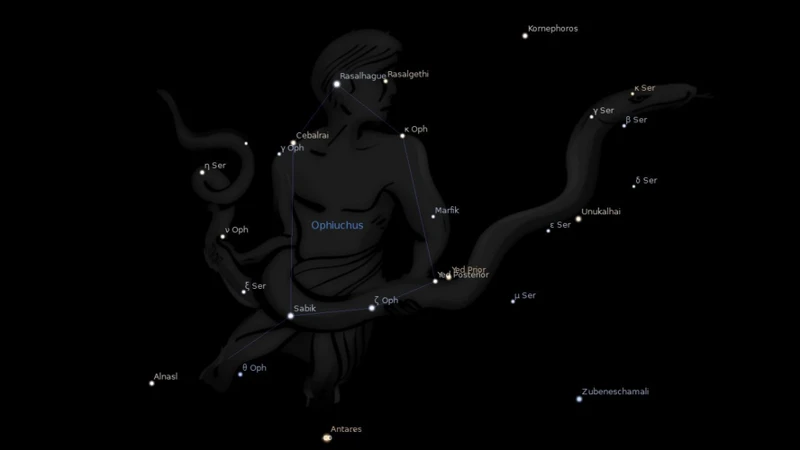
The power of aspect patterns in astrology cannot be overstated. Aspect patterns are specific configurations formed by multiple planets in a birth chart, creating a harmonious or challenging energy dynamic. These patterns enhance and amplify the individual influences of each aspect, providing deeper insights into a person’s life purpose and potential challenges. One example of a powerful aspect pattern is the Grand Trine, which forms when three planets are evenly spaced in the shape of an equilateral triangle in the birth chart. This pattern is associated with innate talents, creativity, and a harmonious flow of energy in the areas represented by the planets involved. It signifies ease and opportunity in manifesting one’s desires. Another potent aspect pattern is the T-Square, which occurs when three planets form a right angle and create a triangle with potentially conflicting energies. This pattern often represents internal struggles, challenges, and obstacles that need to be overcome in order to grow and evolve. It prompts individuals to confront and resolve conflicts within themselves and their external circumstances. Aspect patterns have a profound impact on a person’s life, shaping their experiences, relationships, and overall journey. By analyzing these patterns and understanding their significance, astrologers can offer valuable guidance and insights into how individuals can harness their strengths and navigate challenges to fulfill their potential. So, in the intricate web of astrology, aspect patterns are like unique stories woven within the birth chart, offering a roadmap to self-discovery and self-realization.
Grand Trine
A Grand Trine is a powerful aspect pattern that occurs when three planets form an equilateral triangle within the birth chart. This configuration creates a flowing, harmonious energy that can bring about great potential and blessings in a person’s life. The planets involved in a Grand Trine are typically in the same element (for example, all in fire signs or all in water signs), enhancing their compatibility and creating a sense of ease and flow between them.
The Grand Trine represents a natural talent or inherent gift that an individual possesses. It denotes a particular area of life where things seem to come effortlessly and where the person has a natural affinity or aptitude. It can manifest as creative abilities, intellectual prowess, spiritual insight, or emotional intelligence, depending on the element and planets involved.
This aspect pattern brings about a sense of stability and support, as the planets involved work together harmoniously. There is a sense of ease and natural flow in the areas of life represented by the planets in the Grand Trine. It can indicate a person who is grounded, confident, and successful in utilizing their talents and skills.
However, it is essential to consider the potential pitfalls of a Grand Trine as well. While it can signify innate gifts, it can also create a reliance on these abilities, leading to complacency or laziness in other aspects of life. It can be easy for someone with a Grand Trine to become too comfortable and miss out on growth opportunities or challenges that promote personal development.
A Grand Trine is a significant aspect pattern in astrology that highlights natural talents and gifts. It brings about a sense of ease, harmony, and flow in specific areas of life. However, individuals should also be mindful of the potential pitfalls and not become complacent. Understanding the dynamics and implications of a Grand Trine can provide valuable insights into an individual’s birth chart interpretation.
T-Square
A T-Square is a powerful astrological aspect pattern that consists of two planets in opposition (180 degrees apart) and a third planet forming a square (90 degrees) to both of them. This configuration creates a tension-filled dynamic, as the two opposing planets place pressure on the third planet, forming a right angle. The energy of the T-Square manifests as a constant push and pull between these three planets, creating both challenges and opportunities for growth and transformation in the individual’s life. The planet at the focal point of the T-Square, where the square aspect is formed, becomes the focal point of intense energy and conflict. This planet typically represents a significant area of one’s life where challenges arise and personal development is required. The opposition between the other two planets adds further intensity and polarities to the dynamic, highlighting the need for balance and resolution. Individuals with a T-Square in their birth chart often face persistent obstacles and may experience internal conflicts or external challenges in the area of life represented by the focal planet. However, the T-Square also serves as a catalyst for personal growth and transformation, pushing individuals to confront and overcome their limitations. It can stimulate resilience, determination, and resourcefulness as individuals navigate the complexities of this aspect pattern. Understanding the T-Square in a birth chart is essential for astrologers in providing insight into the individual’s struggles, strengths, and potential paths to resolution and personal growth. It represents an opportunity for the individual to channel the intense energy of the T-Square constructively and harness it to achieve personal and spiritual development.
Conclusion

In conclusion, astrological aspects play a crucial role in interpreting birth charts and gaining a deeper understanding of an individual’s life journey. These aspects provide insights into the unique dynamics and interactions between planets and significant points in a birth chart, offering valuable information about personality traits, strengths, challenges, and potential life events. By studying the different types of aspects, such as conjunctions, oppositions, squares, trines, and sextiles, astrologers can uncover the intricacies and complexities of a person’s character and life path. Additionally, minor aspects like quincunxes and semi-sextiles add further nuances to the interpretation. Moreover, aspect patterns, such as the grand trine and the T-square, bring a heightened significance and power to the overall birth chart analysis. The knowledge and insights gained from interpreting astrological aspects can provide guidance, self-reflection, and empowerment to individuals seeking to understand themselves better and navigate their life with awareness. Through a comprehensive understanding of astrological aspects, one can embrace the beauty and complexity of astrology and unlock the hidden wisdom contained within birth charts. So, explore the fascinating world of astrological aspects and uncover the rich tapestry of meaning that they hold in the realm of astrology.
Frequently Asked Questions

What is the significance of astrological aspects in birth chart interpretation?
Astrological aspects are crucial in birth chart interpretation as they reveal the dynamic relationships between planets and points in the chart. They provide valuable insights into an individual’s personality traits, strengths, challenges, and life events.
How many types of astrological aspects are there?
There are various types of astrological aspects, including conjunctions, oppositions, squares, trines, sextiles, quincunxes, semi-sextiles, semi-squares, and more. Each aspect carries its own unique energy and influence.
What is the difference between major and minor astrological aspects?
Major aspects, such as conjunctions, oppositions, squares, trines, and sextiles, are commonly used in birth chart interpretation as they have a more significant impact on an individual’s life. Minor aspects, like quincunxes and semi-sextiles, add additional nuances to the interpretation.
How do astrological aspects affect personality traits?
Astrological aspects provide insights into how different planetary energies interact within an individual’s birth chart, influencing their personality traits. For example, a harmonious trine between two planets can enhance specific qualities, while a challenging square may present inner conflicts.
Can astrological aspects predict life events?
Astrological aspects offer indications and potentials for various life events, but they do not provide specific predictions. The interpretation of aspects can provide insightful guidance on possible themes and tendencies in an individual’s life journey.
What is a grand trine and how does it impact a birth chart?
A grand trine occurs when three planets form an equilateral triangle in the birth chart. It represents ease and harmony, amplifying positive energies and talents in a person’s life. However, it can also lead to a sense of complacency and a need for conscious effort to embrace growth and challenges.
What is a T-Square aspect pattern?
A T-Square is formed when two planets are in opposition, with a third planet forming squares to both. This aspect pattern signifies tension and challenges in a person’s life, often pushing them to overcome obstacles, take action, and find creative solutions.
How do aspect patterns influence a birth chart?
Aspect patterns, such as the grand trine or T-Square, add layers of complexity and depth to a birth chart interpretation. They provide additional insights into an individual’s life themes, challenges, and potentials, highlighting significant dynamics within the chart.
Can astrological aspects change over time?
Astrological aspects in a birth chart remain fixed throughout a person’s life, as they are specific to the moment of birth. However, transits and progressions, which involve the movement of planets in relation to the birth chart, can activate and influence the aspects at different stages of a person’s life.
Do astrological aspects determine one’s fate?
Astrological aspects do not completely determine an individual’s fate. They provide insights into inherent potentials, strengths, challenges, and themes in a person’s life. How these aspects manifest and are utilized is influenced by personal choices, free will, and individual experiences.
References
Frequently Asked Questions

What is the significance of astrological aspects in interpreting birth charts?
Astrological aspects play a crucial role in interpreting birth charts as they depict the relationships between celestial bodies. These aspects reveal the potential energies and influences that shape a person’s life and personality.
How do astrological aspects impact birth chart interpretation?
Astrological aspects provide valuable information about the dynamics between different planets, showing how they interact and influence each other. This helps astrologers understand the strengths, challenges, and possible outcomes in a person’s life.
What are the major aspects in astrology?
The major aspects in astrology include conjunction, opposition, square, trine, and sextile. Each aspect has its unique energy and brings different qualities to the birth chart interpretation.
Can you explain the conjunction aspect?
The conjunction aspect occurs when two planets are close together in the birth chart. It represents a powerful fusion of energies, symbolizing unity, intensity, and a blending of qualities. This aspect often indicates a strong focus and potential for success or challenges in the related areas of life.
What does the opposition aspect signify?
The opposition aspect describes a relationship between two planets positioned on opposite sides of the birth chart. It represents a polarized energy that demands balance and integration. This aspect often indicates a need to find harmony between opposing forces in life.
How does the square aspect influence birth chart interpretation?
The square aspect occurs when two planets form a 90-degree angle in the birth chart. It represents tension, conflict, and challenges that need to be overcome. This aspect signifies areas of growth, pressure, and opportunities for transformation in a person’s life.
Can you explain the trine aspect?
The trine aspect represents a harmonious connection between two planets, forming a 120-degree angle in the birth chart. It symbolizes ease, flow, and natural talents. This aspect often indicates favorable conditions and opportunities for success in the related areas of life.
What does the sextile aspect signify?
The sextile aspect occurs when two planets are approximately 60 degrees apart in the birth chart. It represents opportunities, creativity, and supportive energies. This aspect often indicates a natural ability to make connections and seize opportunities for growth.
Are minor aspects significant in birth chart interpretation?
Yes, minor aspects also play a role in birth chart interpretation. While major aspects are more prominent, minor aspects provide additional nuances and details to the overall analysis. Quincunx, semi-sextile, and semi-square are some examples of minor aspects.
What is the significance of aspect patterns in birth charts?
Aspect patterns, such as the grand trine and T-square, reveal complex interconnections and dynamics between multiple planets in a birth chart. These patterns bring intensified energies and indicate specific life themes, challenges, or potential talents. They offer deeper insights into a person’s journey.
References
- Interpreting The Planet Aspects In Astrology – Two Wander
- Aspects and Orbs in Astrology – Lesson 9
- How to interpret your Birth Chart

